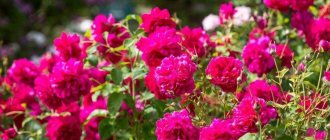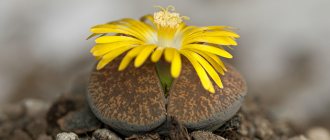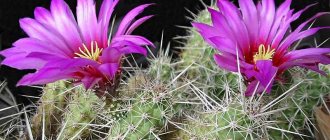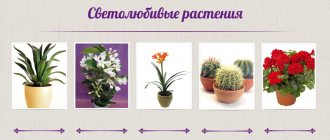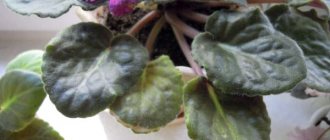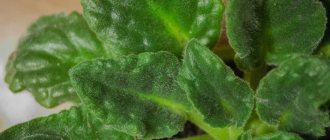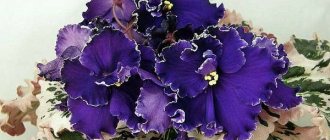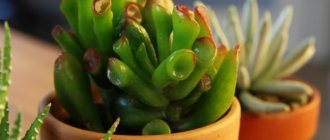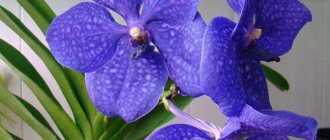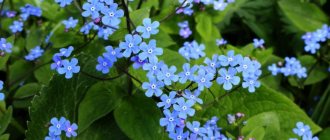Thorny plants are of particular interest to gardeners. There are many varieties of them. Photos of thorny plants demonstrate that some of them have a very exotic appearance and become a decoration of a garden plot or flower bed. Such plants enhance the decorative effect. They are indispensable in design compositions, making them especially stylish. Home gardeners are also very fond of such unusual specimens. The name of thorny plants, as well as a description of their types, will give an idea of the unsafe, but very common inhabitants of flower beds and window sills.
Eringium
Eryngium is another name for it. These plants have a spiny flower. Currently, eryngium is very popular and is a decoration of the garden. Its blue and light blue spiky inflorescences are very showy. The most common species were flat-leaved eryngium and alpine. They are widely used in garden landscape design. The height of these specimens reaches from 70 cm to 1 meter. Alpine eryngium, compared to flat-leaved eryngium, has larger inflorescences.
In modern landscape design, plain eryngium, the so-called tumbleweed, is also used. This is a very prickly but spectacular plant. Eryngium grows well in rocky and dry soil.
How to procure and store raw materials
Before collecting herbs for medicinal purposes, you need to learn to distinguish between thistle and prickly tartar. A photo taken with you will help you avoid mistakes.
To prepare raw materials, you need to put on old leather gloves and arm yourself with pruners or sharp scissors. You only need to cut off young, undamaged leaves and shoots. They are placed in a box or basket to prevent them from getting wrinkled. It is advisable to place cut flowers separately. It is recommended to collect them during flowering. Before drying, you need to remove the thorns so that they do not get into the medicinal raw material, and cut the large leaves lengthwise. Sometimes the roots of plants of the first year of life are also used, which are dug up in late autumn. The grass is laid out on a clean mat or net to dry and left in the shade under a canopy. You can dry the raw materials in the oven. The prickly tartar is a very bitter plant, so after working with it you need to wash your hands thoroughly.
Finished raw materials are stored for no more than 2 years. It’s best to store them in boxes lined with paper inside or in fabric bags.
Thistle
These are annual spiny weeds. There are more than a hundred types of them. Among them is milk thistle. It belongs to one of the species grown by people. Its height is 1.5-2 meters. Its spines are long and sharp. The stem is erect, strongly branched in the upper part. Flowers are collected in prickly baskets. It does not lose its decorative effect throughout the season, delighting with flowering until late autumn. Milk thistle is a light-loving and drought-resistant crop that can survive without watering for a long time. She is not afraid of temporary cold, diseases and pests. Usually milk thistle is planted at a distance of at least 1.5-2 meters from paths and other plants.
In addition to its bright decorative properties, this plant has healing properties: diuretic, antidepressant, anticonvulsant. Its shoots with foliage are widely used to treat various diseases, including diseases of the liver, thyroid gland, radiculitis, hemorrhoids, psoriasis and many others. This amazing plant is also used in cooking in the form of flour and butter.
Sea buckthorn
Another thorny garden shrub is sea buckthorn. The plant reaches several meters in height and has narrow silvery leaves. Sea buckthorn is decorated with its fruits. At the end of summer - beginning of autumn, the bush is showered with orange fruits that literally stick to its branches, hence the name - sea buckthorn. Sea buckthorn fruits are used in cooking and are a valuable source of many vitamins and minerals. Housewives use them to prepare delicious canned food and sauces for meat.
Sea buckthorn does not require care. Planted in a sunny place, it does not require gardener intervention for many years. Suitable for growing in places with high air pollution. The disadvantage of sea buckthorn is that the bush grows rather slowly.
Photo. Sea buckthorn
Teasel
This biennial plant is a stem, the height of which reaches 0.8-2 meters, with a rosette of oblong leaves. At the top and side branches, prickly cones are formed, covered with white and lilac buds.
The plant looks impressive in the garden. It should be planted in the background of a flower bed, against the background of conifers or shrubs, as well as near a wooden fence. It easily endures winter even without shelter. The cones, when ripe, do not crumble and retain their shape. The stems do not bend from wind and rain. It is no coincidence that teasel is the favorite material of florists. It is used both as an independent plant in a bouquet and as part of stylish decorative compositions.
Chemical composition
Scientists have not fully studied all the chemical components that make up the plant, but we can safely say that the prickly tartar contains the following substances:
- insulin;
- bitterness;
- coumarin;
- ascorbic acid;
- alkaloids;
- carbohydrates;
- flavonoids;
- saponins;
- proteins;
- arcciopicrin.
The seeds of the plant contain alkaloids and oil, which is distinguished by a high degree of fat content (up to 35%).
Such an extensive list of components useful for humans puts prickly tartar on a par with other medicinal crops.
Mordovnik
This is a perennial plant from the Asteraceae family. The round head of its inflorescence looks like a club. The stem of Echinops is single, erect. The leaves are pinnately serrated or entire with serrations, depending on the species. It blooms in its second year from May to August. Blue flowers are collected in spiny inflorescences, which have a spherical shape.
This is an unpretentious plant, resistant to diseases. Doesn't like a lot of moisture. Mordovnik is used to decorate flower beds, as its blue color harmonizes with the warm, bright tones of other plants.
Other plants
The following trees and shrubs also have thorns:
- Dog rose is a fast-growing prickly shrub with fruits, an excellent solution for a hedge. Easy to grow, resistant to weather conditions, pests, diseases, branches well, grows quickly, blooms beautifully.
- Robinia false acacia is a fast-growing thorny tree.
- Common hawthorn is a thorny shrub with valuable fruits used for tinctures and liqueurs.
- Eleven angustifolia is an undemanding thorny tree (shrub) that grows strongly.
- Prickly plum (blackthorn) - suitable for a thorny hedge, it grows strongly, produces a lot of root shoots, which can be quite troublesome.
Work related to the care of thorny plants should be performed with extreme caution. Inattention can result in painful injuries. Always use gardening gloves to protect your hands.
Unfortunately, it happens that plants hold dirt, old fallen leaves, and debris on their sharp thorns. Taking them off will not be fun. However, it is worth planting these “sharp” beauties in your garden. Their aesthetic and practical value will compensate for our temporary inconvenience.
cacti
These are thorny plants of different sizes. Basically, cacti are inhabitants of deserts and semi-deserts, where the level of humidity is very low. But some species also grow in the tropics. Cacti easily adapt to sudden temperature changes. They live on sandy and gravelly soils. The spines of these plants grow instead of leaves; their maximum length can be up to 25 cm. This helps cacti prevent moisture loss.
Currently, various types of these exotic plants are very widely used in landscape design.
Contraindications and side effects from taking
Like every folk remedy, all types of folk healing remedies prepared from prickly tartar have contraindications and limitations.
All products have a very small amount of toxicity, so they do not pose a particular danger to human health even after long-term use.
However, side effects may occur in certain risk groups:
- In people with heart and vascular diseases: hypertension, tachycardia, arrhythmias.
- In children under 12 years of age, the exception is the external use of medications.
- In patients whose sensitivity to substances in the plant may cause aversion to it.
- Pregnant women and nursing mothers are contraindicated from taking tartar in any form.
Features of home cacti
These prickly plants are unusually tenacious, as they can survive for a long time without watering or fertilizing. In winter, you don’t have to water them at all. But cacti definitely need sunlight. There are many types of them. Domestic flowering cacti become covered with buds, as a rule, annually, but when they reach 3-4 years of age. This happens in the spring. But some species can delight with flowers at other times of the year.
For a cactus to bloom, it is necessary to create conditions close to natural. First of all, this concerns lighting and humidification. In autumn you need to water less often. In winter, it is advisable to avoid watering altogether. And start spraying with water only in March, resuming irrigation. In winter, the lighting should be dim and the room where the cacti are kept should be cool. If the buds have already appeared, this prickly houseplant should not be replanted or fertilized.
Caution doesn't hurt
When pruning, replanting and other work, take special care: remember to wear rubber gloves and wash your hands and face thoroughly with soap and water. For some houseplants, it is best to keep pots out of the reach of children and pets or move them to another room. It would be a good idea to ask Russia's chief sanitary doctor, Gennady Onishchenko, to instruct all trade organizations to place a warning on the labels of some houseplants: “Caution, they are poisonous!
Some have dangerous green parts, others have dangerous fruits or seeds. There are even some beauties whose toxicity will make you want to put them in a cage. Here is a short (possibly longer) list of the most popular plants: Acalifa, Alocasia, Anthurium, Aucuba japonica, Gloriosa, Diffenbachia, Danielia, Codium, Crestnut, Crinum, Molochium, Oleander, Syngonium, Solanum, Strophanthus, Philodendron and Hoya.
Araucaria
This is a coniferous evergreen plant, its bark is flaky. It grows very slowly. Its branches are located horizontally, the crown is pyramidal. The leaves are subulate, light green in color, up to two centimeters long. Gives the design of the room an elegant chic. Araucaria is unpretentious in care. Loves good lighting, but is afraid of direct sunlight. In the warm season, it requires abundant watering, and in winter, moisture must be reduced. Loves daily spraying.
Holly (holly)
The holly owes its name to the sharp thorns located along the edges of the leaves. Holly leaves are often green with yellow accents along the edges. In autumn, small fruits appear, they are sometimes called berries, but from a botanical point of view they are drupes. The fruits are dark blue or red.
The shrub requires well-drained, humus-rich soil and sufficiently illuminated positions. It is worth planting several holly seedlings nearby; the female specimens only set fruit in the immediate vicinity of the male ones. The bushes are great for pruning and shaping, so they are used for planting along fences and creating hedges.
Photo. Holly holly
Cryptomeria
Its other name is Japanese cedar. This is an evergreen plant of the Cypress family. Its crown is dense, the color varies from light to dark shades of green. Japanese cedar is quite common in landscape design and park landscaping. At home, dwarf forms are used. They are grown in winter gardens, on balconies or terraces. These plants are photophilous, but do not tolerate direct sunlight. The best place for it is outdoors. Watering requires special attention. The water should be warm, settled or boiled. Loves being sprayed.
Tatarnik prickly: medicinal properties
Avicena wrote that the plant has many beneficial qualities and can be used in the treatment of various diseases. It was he who noticed the property of the tartar to stop bleeding.
In addition to the hemostatic effect, the following properties of the prickly tartar are also known:
– increases the body’s resistance to adverse environmental conditions;
- is a tonic and adaptogenic agent, strengthens the immune system;
- increase the tone of the smooth muscles of internal organs;
— normalizes blood pressure and improves heart function;
- has anti-inflammatory and bactericidal effects;
- is a mild and effective diuretic;
- cleanses the blood well;
— normalizes the activity of the nervous system, calms and improves overall performance.
Pandanus
This screw palm is widely used by home gardeners. It is a plant with prickly leaves and a lush crown.
The leaves are narrow and oblong, with spines at the ends. They grow in a spiral. This is a very impressive plant. In nature it grows in the tropics. As a home dweller, pandanus is very unpretentious. It is usually recommended for beginning gardeners. It quickly grows to a large size, becoming similar to a real palm tree. But if there are small children or pets in the house, it is better to avoid this plant.
Traditional medicine recipes
- The first recipe is a decoction. To prepare the remedy you will need 2 large spoons of crushed dry plant, 200 ml of boiling water. The decoction should be cooked in a water bath for at least half an hour, then cooled and strained through cheesecloth. The prepared decoction is used for inflammation of the genitourinary organs three times a day after eating.
- The second recipe is an infusion of fresh herbs. Pour hot water over a handful of chopped herbs and steam for 15 minutes. Drink half a glass 3 times a day during inflammatory processes and to boost immunity.
- The third recipe is herbal powder. Grind the dry raw materials to a powder and eat a small spoon several times a day. Indications: rheumatism, bladder diseases, cancer, hemorrhoids.
- Recipe four - infusion. Ingredients: a large spoon of dry herbs, a glass of boiling water. Infuse the herb in a thermos for several hours, drink half a glass 6 times a day. It is used for lupus, scrofulosis, and skin diseases.
